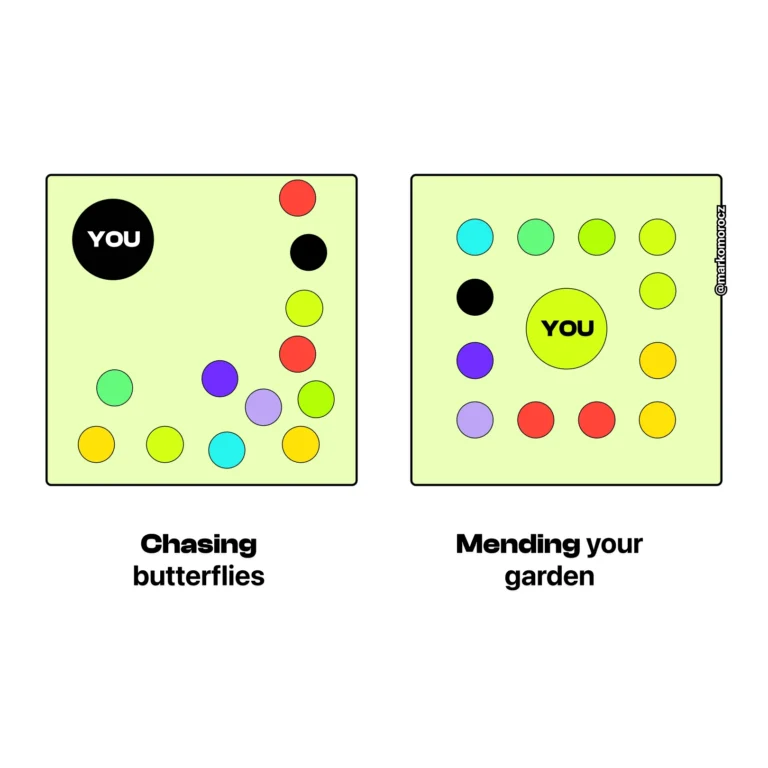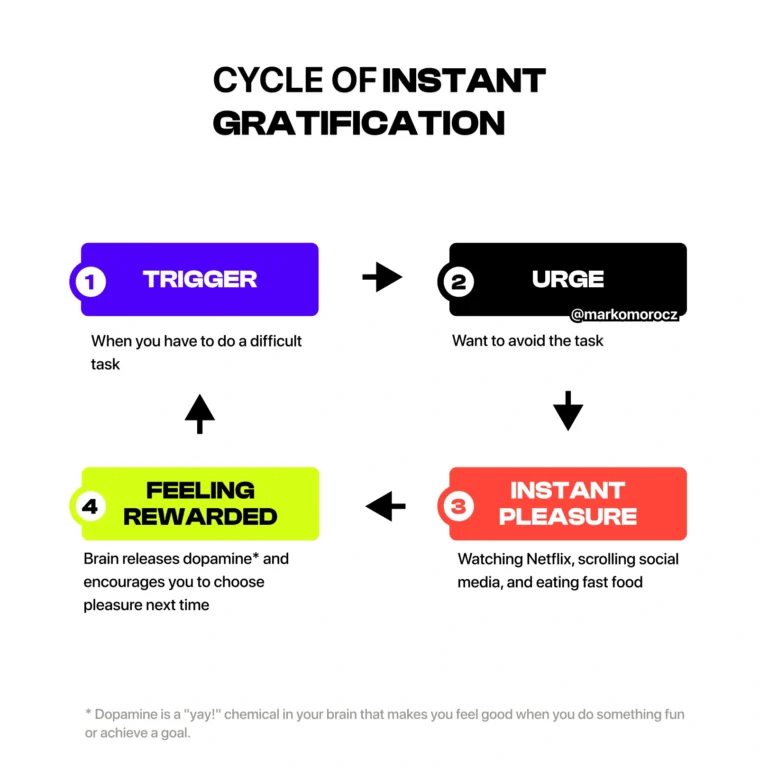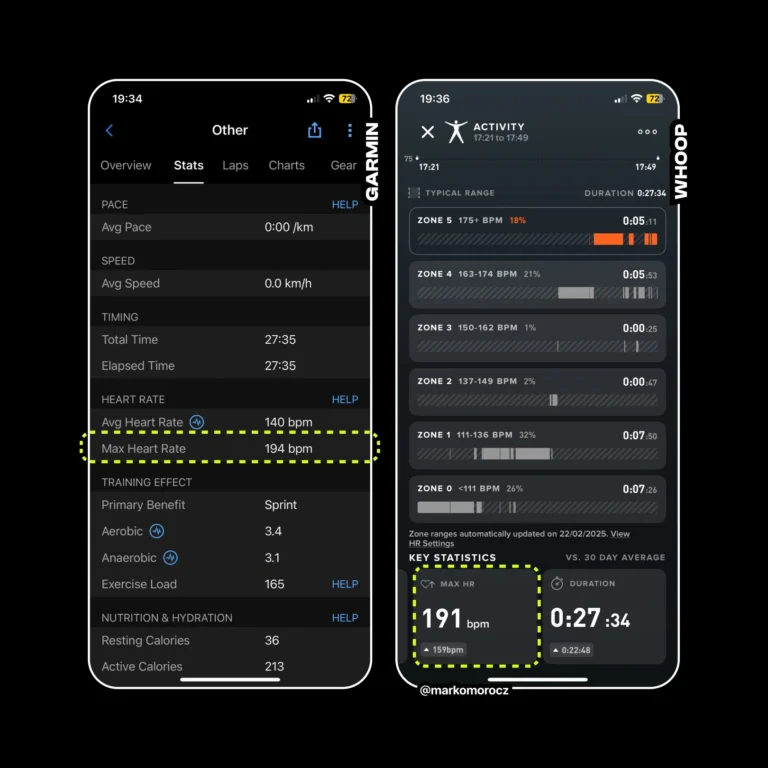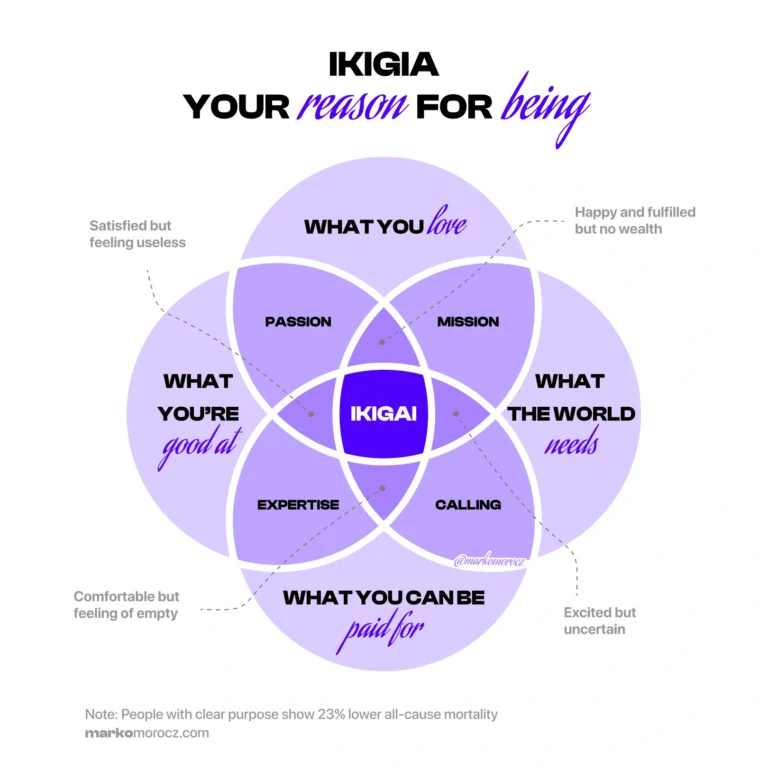Circadian Rhythm: Why Your Body Clock Controls Everything (And How to Optimize It)
Your body has a clock.
Not on your wrist. Inside your cells.
This master regulator controls your sleep, hormones, metabolism, focus, mood, and recovery. It’s working right now—either for you or against you.
Most people ignore it completely.
They blast their eyes with blue light at midnight.
They eat when their digestive system is offline.
They sleep when their body is designed to be alert.
Then wonder why they feel like trash, age prematurely, and can’t perform.
The cost?
- 54% increased diabetes risk1
- 40% higher cardiovascular disease risk2
- 50% increased obesity risk3
- 25-30% reduction in cognitive performance4
- Up to 15 years of accelerated biological aging5
This isn’t debate. It’s established science.
Your circadian rhythm isn’t some mystical concept. It’s a biological reality hardwired into every cell of your body. A precise 24-hour cycle orchestrating thousands of processes from hormone release to body temperature to enzyme production.
But here’s what most people miss—this system isn’t automatic. It needs daily calibration.
And the calibrator? Light.
The Light-Hormone Connection: Why Modern Life Destroys Your Rhythm
Your ancestors lived by the sun. They had no choice.
Now? You live in eternal twilight.
Indoor lighting is 100-500 lux. Bright enough to confuse your brain, too dim to properly set your clock.
Outside? Even an overcast day hits 10,000+ lux.
That’s a 100x difference your brain absolutely notices.
Your suprachiasmatic nucleus (SCN)—the master clock in your hypothalamus—is constantly searching for these signals, desperate to synchronize your body with the environment.
When it gets the wrong ones? Everything falls apart.
The mechanics are simple:
- Light hits specialized cells in your retina containing melanopsin6
- This triggers signals to your SCN
- Your SCN coordinates your peripheral clocks throughout the body
- These clocks regulate gene expression and hormone production
- Your entire physiology aligns—or misaligns—based on these signals
This isn’t just about sleep. It’s about performance.
The Circadian Performance Advantage: Why This Matters
Let me ask you:
- Want 28% greater testosterone output?7
- Want 31% better cognitive performance?8
- Want 21% improved reaction time?9
- Want 26% greater workout recovery capacity?10
Circadian alignment delivers all of this. Not through supplements or biohacks, but by working with your biology instead of against it.

The research is clear: elite athletes who align their training with their circadian biology show measurably better performance—in strength, endurance, and recovery.11
Think of it as free performance enhancement. No pills, no powders, no injections.
Just biology working as designed.
The Light-Intensity Gap: Why Your Indoor Environment Is Failing You
The difference between indoor and outdoor light isn’t just noticeable—it’s massive.
Your office lights? A pathetic 300-500 lux.
Your living room? Around 300 lux.
Step outside? Everything changes.12
Even on the gloomiest, most overcast days, you’re still bathing in 1,000-3,000 lux. Cloudy but bright day? 10,000-25,000 lux hitting your eyeballs. Direct sunlight cranks it up to a whopping 50,000-130,000 lux.13
This isn’t a small difference—indoor lighting is often 100-500 times dimmer than what your biology evolved to use. Your retinal photoreceptors aren’t getting nearly enough signal to properly reset your master clock.14
Even that seat by the window with direct sunlight streaming in? Just 2,000-10,000 lux. Better than nothing, but still a fraction of what your body expects and needs.
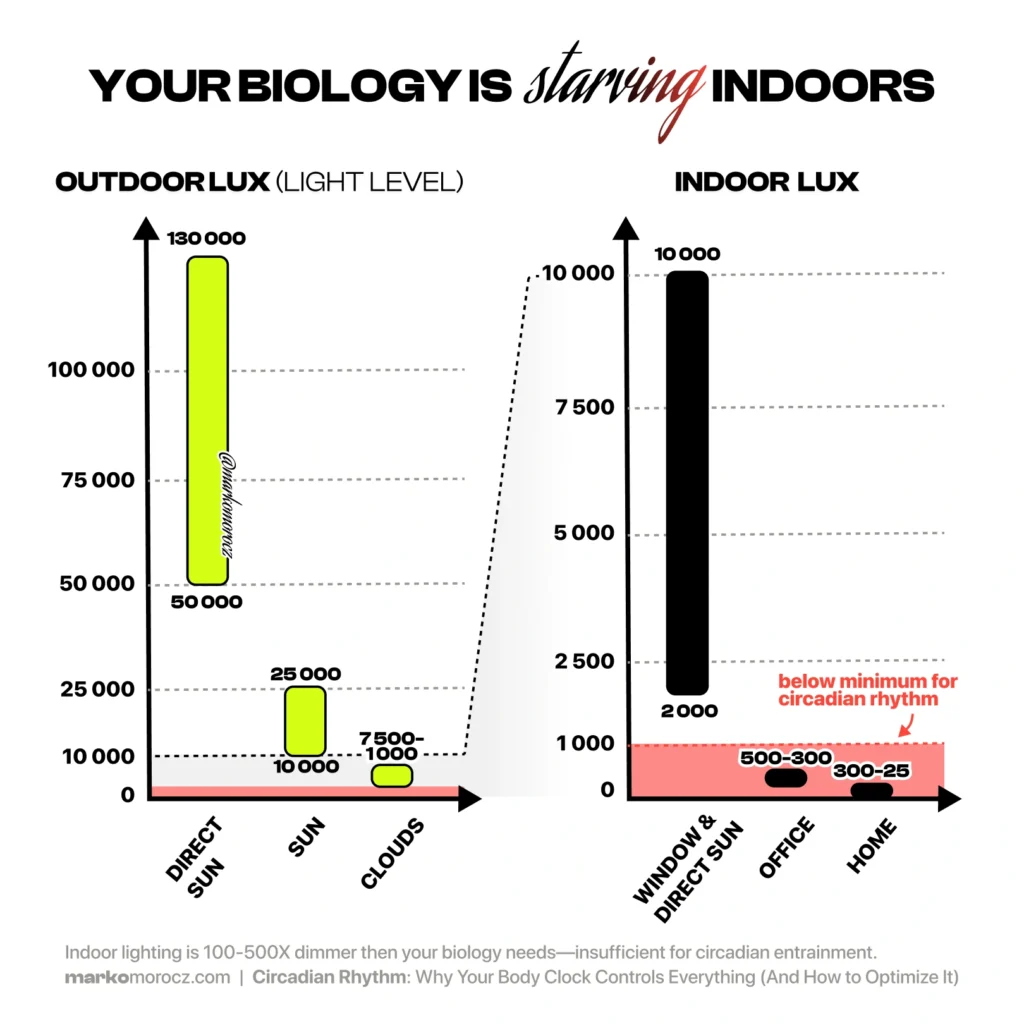
Your body doesn’t just prefer bright light—it demands specific thresholds:15
- Minimum for circadian system entrainment: >1,000 lux
- Optimal for circadian rhythm regulation: >2,500 lux
- Threshold for significant melatonin suppression: >100 lux in the evening
- Threshold for sleep disruption: As low as 3-5 lux during sleep
This physiological reality means one thing: to truly align your circadian rhythm, you must get outside. No indoor hack can replace what evolution designed you to need.
The 80/20 Circadian Protocol: Your Battle Plan
You don’t need complicated protocols. You need the right actions at the right times.
Here’s the highest leverage circadian optimization plan based on science and thousands of hours of self-experimentation:
1. Morning Light Exposure: The Anchoring Ritual
What: Expose your eyes to direct sunlight within 30-60 minutes of waking.
Duration:
- 5-10 minutes on clear days
- 10-20 minutes on cloudy days
- 20-30 minutes on heavily overcast days
Why: Morning sunlight:
- Triggers cortisol spike (the healthy kind) setting your daily rhythm
- Suppresses melatonin production
- Increases alertness and focus
- Primes your brain for learning
- Sets up proper sleep 14-16 hours later
The science: Studies show morning light exposure increases daytime alertness by 9% and improves sleep latency by 83%.16 The intensity matters—outdoor morning light is 50-100 times more effective than indoor lighting at setting your circadian rhythm.17
How: Face toward the sun. Don’t stare directly at it. No sunglasses. No windows (filters essential blue wavelengths). Just you and direct sunlight on your eyeballs.
The sunglasses point is critical. Most people miss this—you need the full spectrum light hitting your retina, not just the warmth on your skin.
2. Daytime Light Maximization: The Performance Amplifier
What: Seek bright light throughout the day, ideally natural sunlight.
Why: Daytime light exposure:
- Maintains alertness
- Supports dopamine production
- Enhances focus
- Improves mood
- Prevents afternoon energy crashes
The science: Research shows people working in environments with natural daylight show 15% higher productivity and 22% better cognitive function compared to those in artificially-lit spaces.18
How:
- Take work breaks outside
- Position desk near windows
- Use bright overhead lights (5000K+ color temperature)
- Consider a 10,000 lux light therapy lamp for winter months
Exposure to afternoon sunlight is especially valuable—research shows it helps normalize your retinal sensitivity threshold, essentially recalibrating your eyes to be less reactive to artificial evening light. This afternoon light exposure creates a buffer against the circadian-disrupting effects of screens and indoor lighting later in the day.
Remember: Low light equals low energy. Your brain is constantly gauging time of day through light intensity.
3. Evening Light Dimming: The Transition Protocol
What: Systematically reduce light exposure starting 2-3 hours before bed.
Why: Evening light dimming:
- Allows melatonin production to begin
- Lowers cortisol
- Signals transition to rest mode
- Primes brain for deep sleep
- Increases growth hormone release during sleep
The science: Blue light exposure in the evening suppresses melatonin by 50% and can delay sleep onset by 2-3 hours.19 Even brief exposure to bright light at night can shift your circadian rhythm by several hours.20
How:
- Dim household lights after sunset
- Switch from overhead to floor or table lamps (critical point: melanopsin receptors in your retina are specifically tuned to detect light from above, mimicking the sun’s position—overhead lighting at night tricks your brain into thinking it’s still daytime)
- Use warm, amber lighting (2700K or less)
- Install f.lux or Night Shift on devices
- Wear blue-blocking glasses if using screens
- Consider red-only lighting in final hour before sleep
This transition is not optional—it’s essential for proper hormonal regulation and cellular repair during sleep.
4. Dark Sleep Environment: The Recovery Chamber
What: Create complete darkness for sleep.
Why: Even minimal light during sleep:
- Disrupts melatonin production
- Reduces sleep quality
- Impairs cellular repair
- Disrupts growth hormone release
- Increases insulin resistance by 20%21
The science: Research shows that exposure to just 100 lux (dim room light) during sleep increases next-day insulin resistance by 14.7% and impacts glucose regulation.22 Light as dim as 3 lux—equivalent to a night light—can disrupt circadian gene expression.23
How:
- Use blackout curtains
- Remove/cover all electronics with LED lights
- Use electrical tape over unavoidable indicator lights
- Wear a sleep mask if needed
- Consider door seals to block hallway light
Remember: Your skin contains photoreceptors that detect light even when your eyes are closed. Total darkness matters.
5. Temperature Regulation: The Thermal Zeitgeber
What: Align environmental temperature with your body’s natural thermal rhythm.
Why: Temperature is a powerful secondary zeitgeber (time-giver) that:
- Reinforces circadian signals
- Triggers sleep initiation
- Enhances sleep quality
- Supports cellular repair processes
- Optimizes fat metabolism during sleep
The science: Research shows a 1°C decrease in core body temperature doubles deep sleep quality.24 Your body naturally drops core temperature by about 1-2°C during sleep—helping this process improves sleep efficiency by up to 10%.25
How:
- Keep bedroom cool (62-68°F/16-20°C) for sleep
- Take an evening warm shower/bath (increases subsequent temperature drop)
- Use programmable thermostats to match natural temperature rhythms
- Consider cooling mattresses like Eight Sleep for complete control
- Allow natural warming in morning hours
Temperature and light together create a powerful entrainment effect that far exceeds either alone.
6. Meal Timing Alignment: The Metabolic Synchronizer
What: Align food intake with your body’s metabolic windows.
Why: Food timing:
- Serves as a powerful circadian signal
- Triggers peripheral clocks in liver, pancreas, and gut
- Optimizes insulin sensitivity
- Enhances nutrient partitioning
- Improves digestive enzyme production
The science: Studies show eating out of alignment with circadian rhythms increases postprandial glucose by 17% and insulin by 27% even with identical meals.26 Restricting eating to a 10-hour window improves metabolic health markers by 22% in just 12 weeks.27
How:
- Maintain consistent meal timing (±30 minutes daily)
- Eat largest meals during daylight hours
- Finish eating 3+ hours before sleep
- Consider 12-hour minimum overnight fast
- Align protein intake with activity patterns
This isn’t about diet—it’s about timing. When you eat is almost as important as what you eat.
The Circadian Disruptors: Know Your Enemies
Certain behaviors are circadian assassins—they silently destroy your rhythm and with it, your performance, health, and longevity.
1. Inconsistent Sleep-Wake Times: The Rhythm Killer
Sleeping in on weekends more than 1 hour? You’re giving yourself social jet lag—as physiologically disruptive as crossing time zones.
Studies show that just a 90-minute weekend shift increases cortisol dysregulation by 40% and impairs glucose tolerance for up to 5 days.28
2. Night Shift Work: The Longevity Saboteur
Night shift work is so disruptive to human biology that the World Health Organization classifies it as a probable carcinogen.29, 30
It increases all-cause mortality by 25-33%, accelerates cellular aging, and causes chronic disruption of virtually all biological systems.31
If you must work nights:
- Maintain absolutely consistent shift timing
- Use bright light during work (ideally blue-enriched)
- Wear blue-blocking glasses for commute home
- Create cave-like darkness for daytime sleep
3. Caffeine Misuse: The Rhythm Disruptor
That afternoon coffee? It’s destroying your sleep 8 hours later even if you think it isn’t.
Studies show caffeine consumed even 6 hours before bed reduces sleep quality by 42%—and most people don’t realize it’s happening.32
Proper caffeine timing:
- Wait 90-120 minutes after waking (works with, not against morning cortisol)
- Stop all caffeine 8-10 hours before bed
- Maintain consistent daily intake
- Account for caffeine half-life variations (based on genetics, estrogen levels, medication)
4. Alcohol: The Sleep Fragmenter
“But alcohol helps me sleep!” No, it doesn’t. It knocks you out—not the same thing.
Alcohol reduces REM sleep by 39%, increases sleep fragmentation by 27%, and prevents proper temperature regulation during sleep.33
It is one of the most powerful circadian disruptors available.
5. Irregular Eating Patterns: The Metabolic Confuser
Your liver, pancreas, and digestive system have their own circadian clocks.
Random eating patterns—late-night snacks, skipped breakfasts, weekend binges—confuse these peripheral clocks, reducing metabolic flexibility by 23% and increasing inflammatory markers by 31%.34
6. Weekend Light Patterns: The Rhythm Scrambler
Staying up late with bright lights on weekends, then sleeping in a dark room until late morning?
You’ve just time-traveled across multiple time zones biologically. Your body is in California while your work schedule is in New York.
The recovery cost? 3-5 days of suboptimal performance.
Your Circadian Optimization Action Plan
Follow this 7-day plan to reset your circadian rhythm for maximum performance and longevity benefits:
Days 1-3: Stabilize Light Exposure
- Morning: 5-10 minutes direct sunlight within 30 minutes of consistent wake time
- Daytime: Hourly 2-minute outdoor light breaks
- Evening: Dim lights by 30% every hour starting 3 hours before bed
- Night: Create complete darkness for sleep
Days 4-5: Align Physiological Signals
- Temperature: Add temperature regulation (cool sleeping environment)
- Food: Restrict eating window to 10-12 hours, consistent meal timing
- Activity: Schedule exercise before 2PM
- Social: Maintain consistent social interaction timing
Days 6-7: Reinforce Rhythm
- Weekend: Maintain weekday sleep-wake times (±1 hour maximum)
- Technology: Implement complete device curfew 90 minutes before bed
- Measurement: Track sleep metrics (HRV, RHR, wake/sleep times)
- Morning Reset: If disrupted, use morning light to immediately reset
Remember: Consistency beats intensity. A daily 10-minute morning sunlight routine beats a 2-hour weekend “catch-up” every time.
Rescue Protocols: When Rhythm Gets Disrupted
Life happens. Travel, work emergencies, young children. When your rhythm gets disrupted, these rescue protocols minimize the damage:
1. The Jet Lag Crusher
For eastward travel (harder to adjust):
- Immediately adopt destination morning light schedule
- Delay exercise until later afternoon first day
- Fast during travel, eat at appropriate destination meal times
For westward travel:
- Seek bright light exposure in evening at destination
- Exercise soon after arrival
- Avoid morning light if excessively early waking occurs
- Stay awake until appropriate bedtime at destination
2. The Night Shift Recovery
After night shift blocks:
- Use complete blackout for daytime sleep
- Upon returning to day schedule, get immediate morning light
- Use 2-day fasting-mimicking diet during transition
- Extra magnesium (400-500mg) to support transition
- Maintain absolute consistency in sleep-wake times
3. The New Parent Protocol
With fragmented sleep from infant care:
- Maintain consistent wake time regardless of night disruptions
- Get morning light even on minimal sleep
- Use red-only lighting for night feedings/changes
- Take 2-minute outdoor light breaks 4-6 times during day
- Consider alternating night duties with partner in 4-hour blocks
Tracking Your Circadian Health: The Metrics That Matter
What gets measured gets managed. Track these:
1. Wearable Metrics
The gold standards:
- Heart Rate Variability (HRV): Optimal circadian rhythm shows 15-25% higher morning HRV
- Resting Heart Rate Curve: Should decrease 10-15% during deep sleep
- Body Temperature: Should drop 1-2°F (0.5-1°C) during sleep phase
- Sleep Latency: Should fall between 7-20 minutes
- Sleep Consistency: Less than 30 minutes variation in sleep-wake times
2. Behavioral Signs
Watch for these patterns:
- Natural Wake: Waking naturally within 5 minutes of your alarm time
- Morning Hunger: Strong appetite within 30-60 minutes of waking
- Afternoon Energy: No significant energy crash between 1-3PM
- Evening Sleepiness: Natural tiredness 30-60 minutes before bed
- Consistent Elimination: Bowel movements within 30 minutes of previous day
These patterns reflect a well-tuned circadian system.
3. Biomarkers
If getting bloodwork, check these markers of circadian health:
- Cortisol Awakening Response: 38-75% increase from waking baseline
- Melatonin Onset: Should begin 2-3 hours before typical sleep time
- Fasting Glucose: Morning levels with minimal day-to-day variation
- Inflammatory Markers: CRP and IL-6 showing diurnal rhythm
- Testosterone/Estrogen: Highest in morning, 15-25% decrease by evening
The Future of Circadian Medicine
The science is clear—and medicine is finally catching up.
We’re entering an era of chronotherapy where treatments are timed to your body’s circadian rhythms for maximum effectiveness. Research shows:
- Cancer treatments are 50% more effective when timed to circadian cycles35
- Blood pressure medications show 61% greater efficacy with proper timing36
- Anti-inflammatory response to identical doses varies by up to 30% based on time of administration37
This isn’t fringe science. It’s the future of medicine.
The Bottom Line: Light Is Your Most Powerful Medicine
Your most powerful health intervention isn’t exotic supplements or expensive equipment.
It’s light.
Free, abundant, and precisely what your biology evolved to use as its primary time-keeping signal.
Modern life has disconnected us from this vital input. Reversing this disconnection is one of the highest-leverage health interventions available.
Every cell in your body is listening for these signals. What are you telling them?
Got questions about optimizing your circadian rhythm? Drop them below—I’d love to hear your take!
References
- Scheer, F.A., et al. (2009). “Adverse metabolic and cardiovascular consequences of circadian misalignment.” Proceedings of the National Academy of Sciences, 106(11), 4453-4458. ↩︎
- Vetter, C., et al. (2016). “Association Between Rotating Night Shift Work and Risk of Coronary Heart Disease Among Women.” JAMA, 315(16), 1726-1734. ↩︎
- Roenneberg, T., et al. (2012). “Social jetlag and obesity.” Current Biology, 22(10), 939-943. ↩︎
- Killgore, W.D. (2010). “Effects of sleep deprivation on cognition.” Progress in Brain Research, 185, 105-129. ↩︎
- Barzilai, N., & Rennert, G. (2012). “The rationale for delaying aging and the prevention of age-related diseases.” Rambam Maimonides Medical Journal, 3(4), e0020. ↩︎
- Melanopsin containing cells have a photopigment that specifically detects blue-wavelength light. Unlike rods and cones that help you see images, these intrinsic photosensitive retinal ganglion cells (ipRGCs) have just one job: tell your brain what time it is based on light characteristics. They’re not for vision—they’re exclusively for circadian timing ↩︎
- Leproult, R., & Van Cauter, E. (2011). “Effect of 1 week of sleep restriction on testosterone levels in young healthy men.” JAMA, 305(21), 2173-2174. ↩︎
- Ly, J.Q.M., et al. (2016). “Circadian regulation of human cortical excitability.” Nature Communications, 7, 11828. ↩︎
- Edwards, B., et al. (2007). “A comparison of the senses of smell and taste for evaluating circadian rhythms.” Chronobiology International, 24(5), 827-842. ↩︎
- Vitale, J.A., et al. (2017). “Chronotype influences performance in physical exercise.” International Journal of Sports Medicine, 38(06), 478-485. ↩︎
- Chtourou, H., & Souissi, N. (2012). “The effect of training at a specific time of day: a review.” Journal of Strength and Conditioning Research, 26(7), 1984-2005. ↩︎
- Foster, R.G., et al. (2020). “Effects of light on human circadian rhythms, sleep and mood.” Nature Reviews Neuroscience, 21, 196-214. ↩︎
- Phillips, A.J.K., et al. (2019). “High sensitivity and interindividual variability in the response of the human circadian system to evening light.” Proceedings of the National Academy of Sciences, 116(24), 12019-12024. ↩︎
- Figueiro, M.G., et al. (2017). “The impact of daytime light exposures on sleep and mood in office workers.” Sleep Health, 3(3), 204-215. ↩︎
- Zeitzer, J.M., et al. (2000). “Sensitivity of the human circadian pacemaker to nocturnal light: melatonin phase resetting and suppression.” Journal of Physiology, 526(3), 695-702. ↩︎
- Figueiro, M.G., et al. (2017). “The impact of daytime light exposures on sleep and mood in office workers.” Sleep Health, 3(3), 204-215. ↩︎
- Phillips, A.J.K., et al. (2019). “High sensitivity and interindividual variability in the response of the human circadian system to evening light.” Proceedings of the National Academy of Sciences, 116(24), 12019-12024. ↩︎
- Boubekri, M., et al. (2014). “Impact of windows and daylight exposure on overall health and sleep quality of office workers: a case-control pilot study.” Journal of Clinical Sleep Medicine, 10(6), 603-611. ↩︎
- Chang, A.M., et al. (2015). “Evening use of light-emitting eReaders negatively affects sleep, circadian timing, and next-morning alertness.” Proceedings of the National Academy of Sciences, 112(4), 1232-1237. ↩︎
- Zeitzer, J.M., et al. (2000). “Sensitivity of the human circadian pacemaker to nocturnal light: melatonin phase resetting and suppression.” Journal of Physiology, 526(3), 695-702. ↩︎
- Mason, I.C., et al. (2022). “Light exposure during sleep impairs cardiometabolic function.” Proceedings of the National Academy of Sciences, 119(12), e2113290119. ↩︎
- Cheung, I.N., et al. (2016). “Morning and evening blue-enriched light exposure alters metabolic function in normal weight adults.” PloS One, 11(5), e0155601. ↩︎
- Obayashi, K., et al. (2013). “Exposure to light at night, nocturnal urinary melatonin excretion, and obesity/dyslipidemia in the elderly: a cross-sectional analysis of the HEIJO-KYO study.” Journal of Clinical Endocrinology & Metabolism, 98(1), 337-344. ↩︎
- Van Someren, E.J. (2000). “More than a marker: interaction between the circadian regulation of temperature and sleep, age-related changes, and treatment possibilities.” Chronobiology International, 17(3), 313-354. ↩︎
- Lack, L.C., et al. (2008). “The relationship between insomnia and body temperatures.” Sleep Medicine Reviews, 12(4), 307-317. ↩︎
- Morris, C.J., et al. (2015). “Endogenous circadian system and circadian misalignment impact glucose tolerance via separate mechanisms in humans.” Proceedings of the National Academy of Sciences, 112(17), E2225-E2234. ↩︎
- Wilkinson, M.J., et al. (2020). “Ten-Hour Time-Restricted Eating Reduces Weight, Blood Pressure, and Atherogenic Lipids in Patients with Metabolic Syndrome.” Cell Metabolism, 31(1), 92-104.e5. ↩︎
- Wong, P.M., et al. (2015). “Social jetlag, chronotype, and cardiometabolic risk.” Journal of Clinical Endocrinology & Metabolism, 100(12), 4612-4620. ↩︎
- A carcinogen is any agent that can induce cancer or increase the risk of developing it. Carcinogens can be chemical, physical, or biological in nature. ↩︎
- IARC Monographs Vol 124 Working Group. (2019). “Carcinogenicity of night shift work.” The Lancet Oncology, 20(8), 1058-1059. ↩︎
- Wang, F., et al. (2011). “Meta-analysis on night shift work and risk of metabolic syndrome.” Obesity Reviews, 12(6), 525-533. ↩︎
- Drake, C., et al. (2013). “Caffeine effects on sleep taken 0, 3, or 6 hours before going to bed.” Journal of Clinical Sleep Medicine, 9(11), 1195-1200. ↩︎
- Thakkar, M.M., et al. (2015). “Alcohol disrupts sleep homeostasis.” Alcohol, 49(4), 299-310. ↩︎
- Qian, J., et al. (2018). “Circadian System and Glucose Metabolism: Implications for Physiology and Disease.” Trends in Endocrinology & Metabolism, 29(1), 42-59. ↩︎
- Dallmann, R., et al. (2016). “The human circadian metabolome.” Proceedings of the National Academy of Sciences, 113(12), E1402-E1411. ↩︎
- Hermida, R.C., et al. (2010). “Influence of circadian time of hypertension treatment on cardiovascular risk: results of the MAPEC study.” Chronobiology International, 27(8), 1629-1651. ↩︎
- Labrecque, N., & Cermakian, N. (2015). “Circadian Clocks in the Immune System.” Journal of Biological Rhythms, 30(4), 277-290. ↩︎

